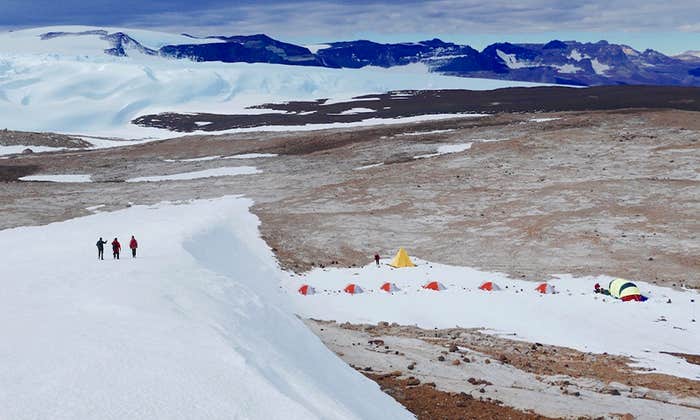The ice on Lake Baikal in Siberia is thick and endless, a deep blue covered with fresh powdery snow. It’s a long journey to reach this middle of nowhere. First a six-hour flight from Moscow to Irkutsk, then three hours by car, and finally four hours on the “Matanya,” a train rolling at bicycle speed on the single-track railway hugging Baikal’s breathtaking coast. Built in 1905, if the train were to go any faster than 15 or 20 miles per hour, it would not make the bends and would fall into the lake. Bair Shaybonov’s destination is a single house, right at the edge of the lake, without running water. The toilet is a shack outside.
Shaybonov is an experimental physicist, based at the Joint Institute for Nuclear Research in Dubna, a town near Moscow, where he lives with his dentist wife Soelma and two small daughters, Oyuna, 10 and Saryuna, 4. But nearly every spring for the past 14 years, he leaves his family behind for the frozen stillness of Baikal. And his long absences have caused problems. His daughters miss him and his wife has suffered from depression.
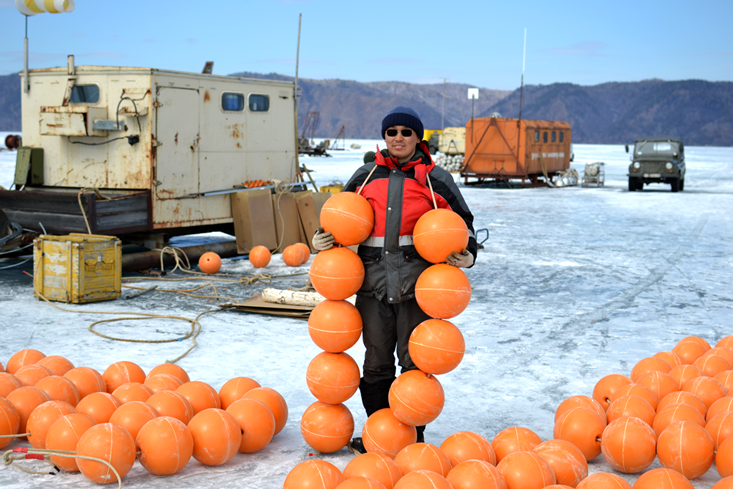
But at Baikal, he gets to work on some of the greatest mysteries in physics today. Every year, from February through April, a dozen or so scientists like him converge here on the ice to pull a strange construction from the depths of the lake. Looking like a weird octopus with bulging eyes and jellyfish legs, it’s an underwater detector that hunts for high-energy neutrinos, some of the most elusive particles in our universe. The detector may even one day find evidence of dark matter—an unidentified type of matter that probably makes up around 27 percent of the observable universe.
These detectors are hypersensitive, and any background noise or radiation can spoil months of work. So researchers like Shaybonov spend weeks if not months in self-inflicted isolation, all of which can come at a huge cost: Many experience loneliness, feel the strain on their marriages or miss seeing their kids grow up. But they can’t just walk away from their work. Their jobs bring them incredible intellectual rewards, feeding their sense of wonder. The chance to do cutting-edge science in a place of exceptional natural beauty is for some scientists too good to pass up. And so, they toggle between the social and intellectual spheres, experiencing the joys and frustrations of trying to meet the demands of these often mutually exclusive forms of life.
At 3:34 a.m. on Feb. 27, 2010, an earthquake with a magnitude of 8.8 hit the coast of central Chile, causing 93 percent of the population to lose electricity and killing 525 people. But high up in the Chilean mountains of the Atacama Desert, astronomer Paulo C. Cortes did not feel a thing. Sitting in the control room of the Atacama Large Millimeter/submillimeter Array (ALMA), a giant radio telescope, he and the 50 or so crew only noticed that something was wrong when all their communication links went dead, even the phones to the nearest mud hut village of San Pedro.
It took two days to get the first people from ALMA down to Santiago. For many, it meant “extreme anguish,” because they did not know whether their families had survived the quake, says Cortes. People were angry, frustrated, and some broke down crying. “I’ve never felt more isolated,” he remembers.
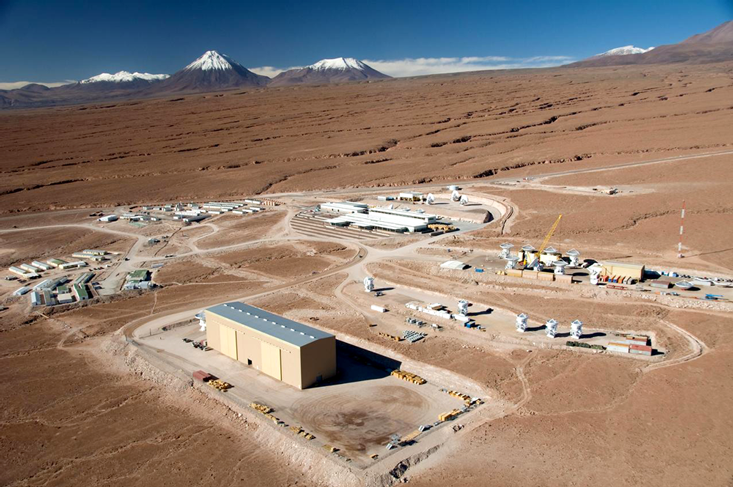
But feeling lonely and disconnected pervades his life. Every three weeks, he flies two hours from Santiago to Calama, then drives another two hours to ALMA for an eight-day stint. The regular absences, plus all additional trips for science and to conferences make it difficult to have a family life. And there are many people at ALMA whose marital life has taken a hit. One of the engineers had to quit, because his wife told him to choose between her and the observatory. Several others admit privately to family problems. At nearby Paranal, home to the world’s most advanced optical telescope, the Very Large Telescope (VLT), and its Survey Telescope (VST) that is currently performing a major dark matter survey of the southern skies, an astronomer confides that his wife divorced him, because she got fed up with his constant traveling.
Still, Cortes’ marriage remains intact. “The problem is not my wife, but my daughter, Catalina,” says Cortes. She is nearly 6 and is now acutely aware when her dad isn’t around. Sometimes when he calls, she refuses to speak to him, and is angry with him for being away. Other times, she’s extremely excited that Daddy is coming home, up until the moment he opens the door. Once he’s inside and smiles at her, she doesn’t smile back. Instead, she greets him with a cold look, shrugs her shoulders and hides in her room. It takes a while for her to warm up to him again.
But high up in the Chilean mountains of the Atacama Desert, Cortes did not feel a thing.
One might assume that remote work allows scientists to focus on their jobs, but the effect of being away can have the opposite impact. Cortes sometimes misses his daughter so much that he needs time to compose himself before he can concentrate on the task at hand.
Despite these challenges, Cortes has many reasons why he doesn’t quit his job. In Chile, it’s not that easy to get a decent job for an astronomer, he says. His job at ALMA is “very well paid, compared to Chilean university standards.” He travels to international conferences, receives an annual month-long science leave to do independent research, and has a holiday allowance of up to 34 days a year.
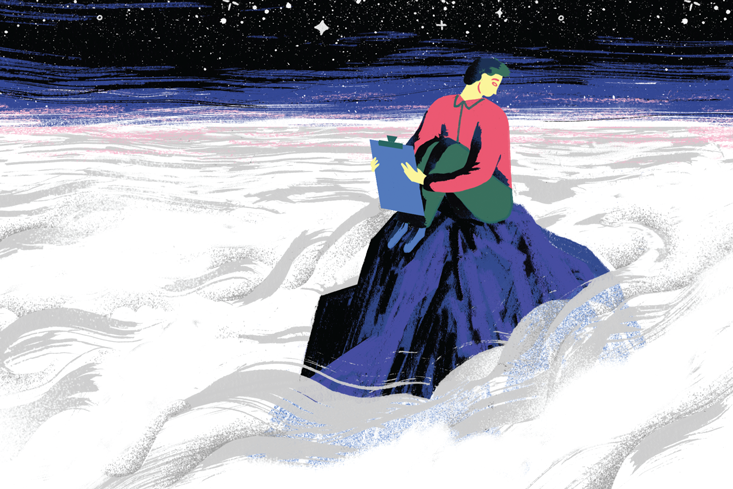
But most importantly, he gets to be at the bleeding edge of science—and for an astronomer working in the field, not many places get better than ALMA, a sunlit plateau high up in the mountains, with its giant mushroom-like antennas scanning the universe.
He wants Catalina to appreciate these reasons. “I explain to her that I like my work, and that there are some things we like to pursue, like happiness,” he says. He’s following his dreams, but worries that one-day she will also choose a job like his and have to make decisions with similar costs.
While some researchers like Cortes miss out on being with their families, others miss out on finding a girlfriend, as Mack van Rossem recently discovered. Van Rossem is a graduate student in particle physics and was stationed at IceCube, a laboratory set in the vastness of Antarctica that looks more like the lair of a James Bond villain than a laboratory designed to hunt for elusive neutrinos. With a crew of around 50, fieldwork can lead to romance: Some people arrive single and then leave in a couple.
But not everyone is so lucky. Van Rossem was a backup to work at IceCube for one year. When he arrived two months later than the rest of the crew, he quickly realized that it was a bit too late to start any relationship: “Most of the women had already paired off.” It’s a challenge for van Rossem, who says that not having a girlfriend is “something that I miss more than anything else.”
He wouldn’t characterize his decision as a sacrifice, but rather as an exchange. He is pushing pause on his social life for the chance to hone his scientific skills while being surrounded by breathtaking nature. But would he do it again? “I think it was a pretty good deal for me to do once,” he says. “Whether I would make that trade twice, well, the jury is still out on that.”
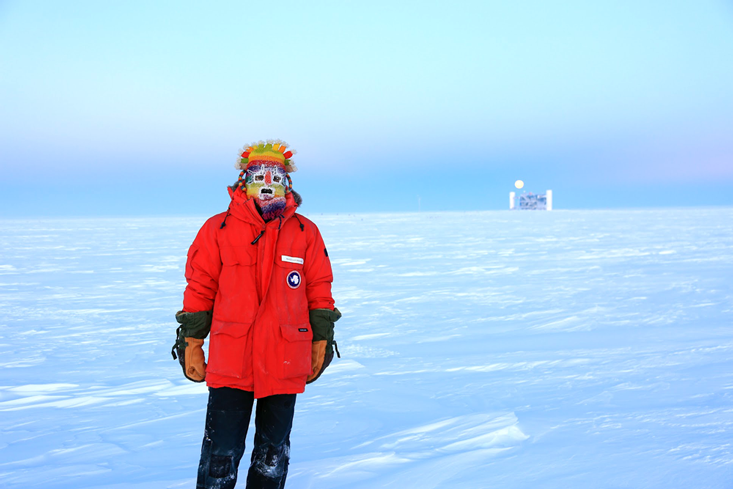
To keep busy during free time, van Rossem and his colleagues find comfort in Skype and email, thanks to the two satellites that upload data daily, allowing the crew to access the internet for seven hours when they pass overhead. The crew has pretty much everything essential to survive. And to help prevent them from “going crazy,” says van Rossem, there are movie nights, volleyball, and Japanese class.
All of this helps with isolation, which is even more acute when the endless white landscape of the Pole is plunged into total darkness from April to August. Christian Krüger, van Rossem’s colleague, complains about his own mood swings during the dark months, wondering why he is still there. It’s during the endless night that he yearns for the trees and grass, parks and cities. Even the rain. But perhaps most of all, he misses the serendipity of meeting new people, like striking up a brief conversation with a stranger in a grocery shop.
At Baikal, where Shaybonov works, scientists also work in a small team and loneliness is still an issue. A lack of resources means that the team tends to be not carefully constructed, but rather jumbled together. As a result, says Shaybonov, there are always among his colleagues some “people who are very conflict-prone. No one works with them, and we prefer to avoid them,” he says.
To pass the time in the evenings, they might drink vodka or play the guitar. But there are never any women on these expeditions, mainly due to the spartan amenities. The scientists live in tiny cabins each with two bunk beds and a small heater. There’s also no privacy, which is why his wife has never visited him on the ice, and neither have his children, who, like Cortes’s daughter, as they age and become more aware, miss him every year that little bit more. “I know Daddy’s work is important, but I wish he’d be home more,” says Oyuna.
So does Shaybonov’s wife, who struggles when he’s away. One sunny winter day a couple of years ago, she went for a walk with the two girls, slid and fell, breaking her leg. She still managed to look after them, in part thanks to a relative who came to help. But not being mobile and without her husband, she became depressed. “He wasn’t here to support me when I was taking anti-depressants,” she recalls.
Perhaps most of all, he misses the serendipity of meeting new people.
For his part, Shaybonov wanted to hold her hand, tell her that everything would be all right, and help with the kids. But the best he could do was talk to her by Skype. He couldn’t leave Baikal without losing his job. “That’s how it is, whether you want it or not,” he says.
Avoiding dilemmas like this is why some scientists prefer desk jobs. “Being away for an extended period of time is a tall order that not many scientists are willing to accept,” says Avi Loeb, the Frank B. Baird Jr. Professor of Science at Harvard University. While Loeb also hunts for dark matter, he rarely leaves his office. He admires the experimental physicists who venture far from home, but believes that to retain his stability of mind he needs to stay close to his family. “Social life is not just about exchanging information,” he says, but also “it involves physical contact and creating experiences.”
But Shaybonov doesn’t stay at his job simply because he must, but because he needs it. Something about Baikal just doesn’t let him go, he says. For Shaybonov, being out on the ice almost 100 miles from civilization gives him the rare chance to “relax emotionally,” he says. “It’s such a vital, crucial break.”
This article was originally published in Nautilus Magazine‘s Cosmo channel in February 2017.




















